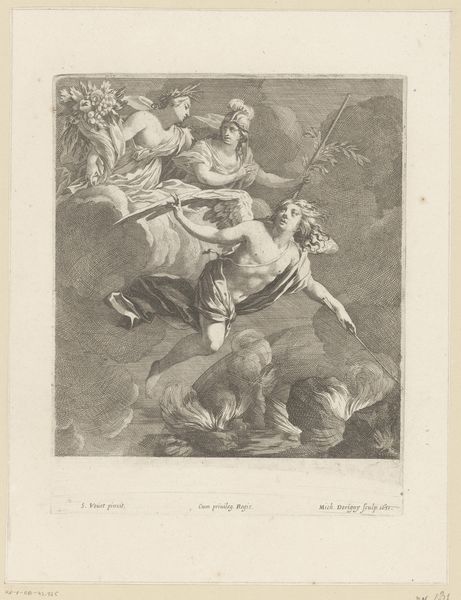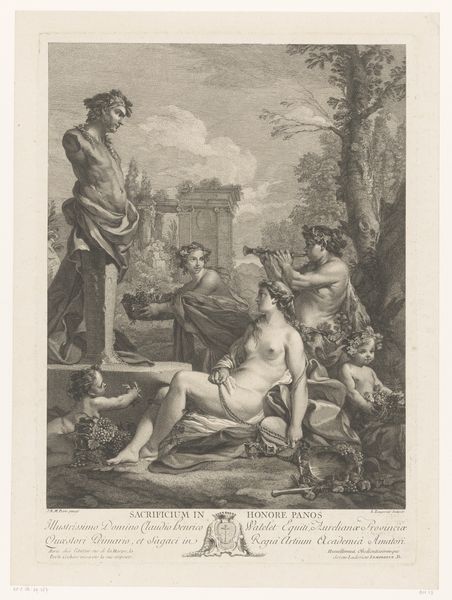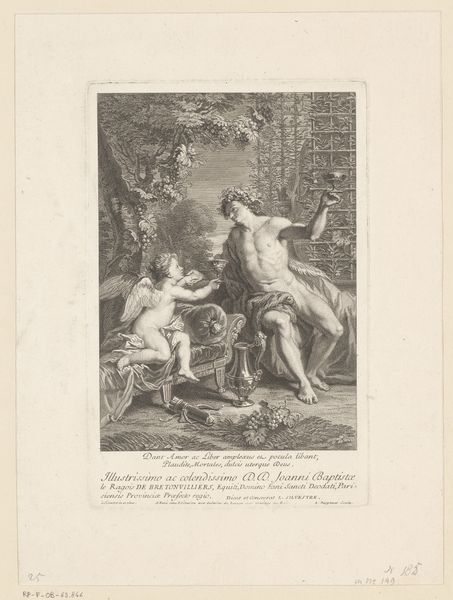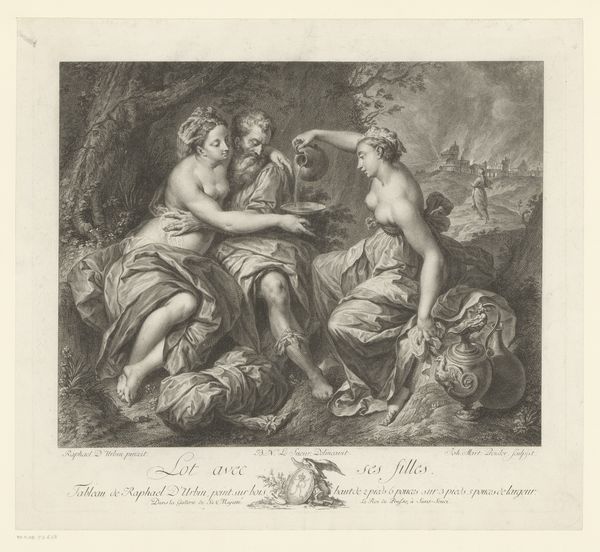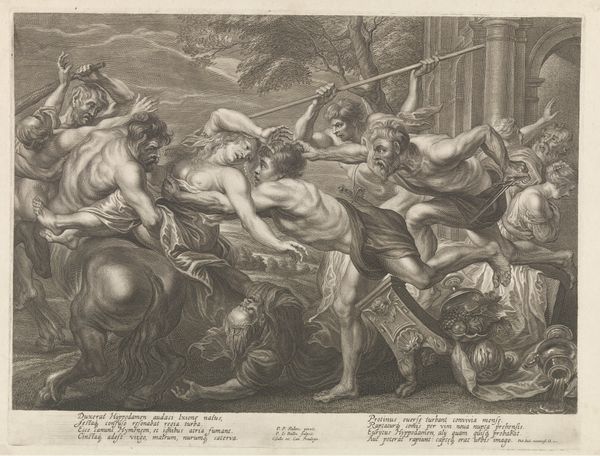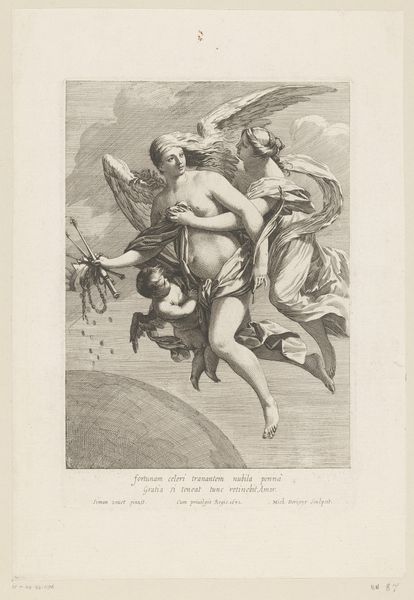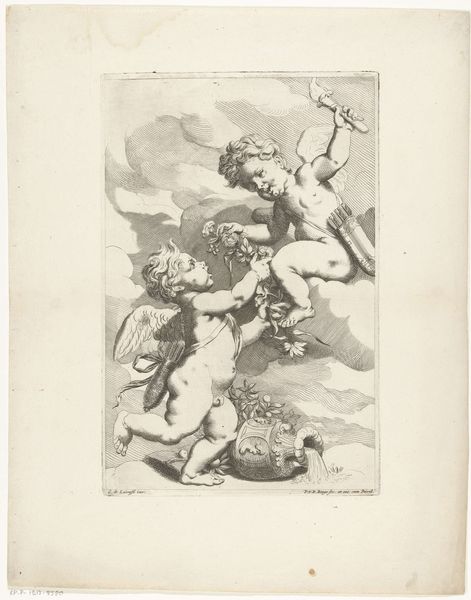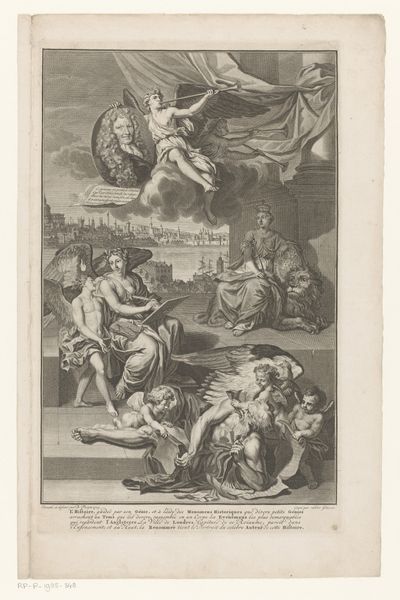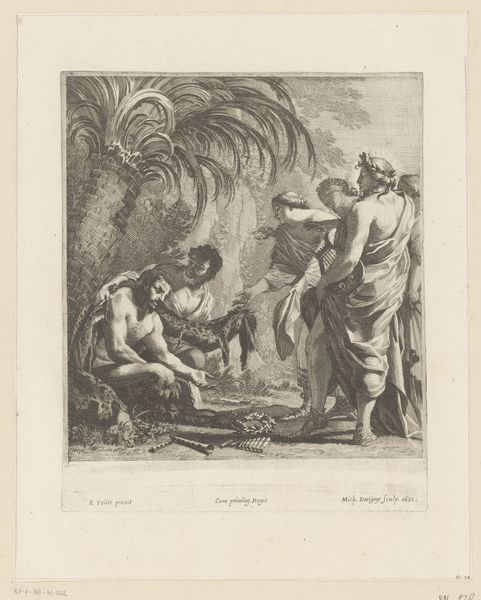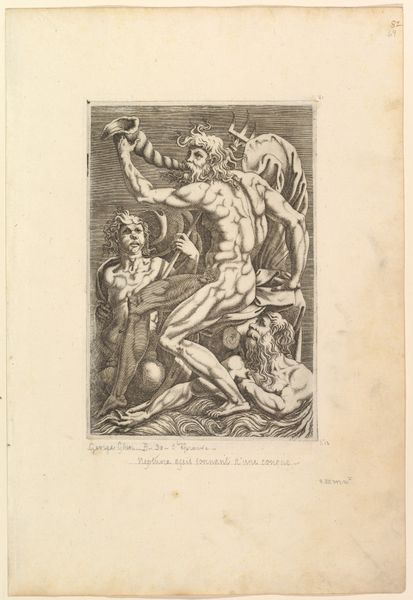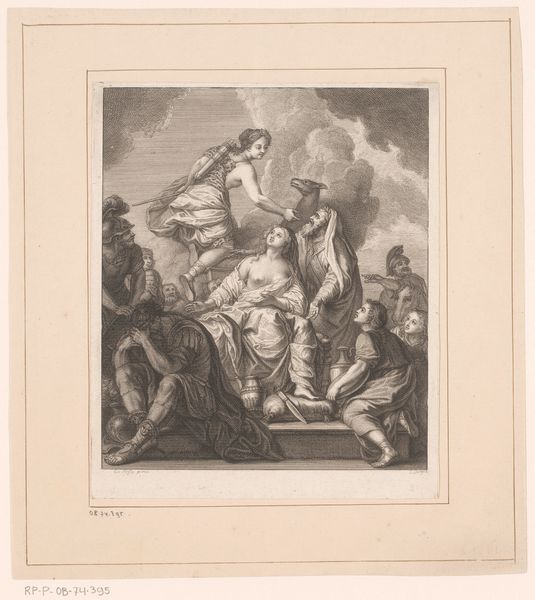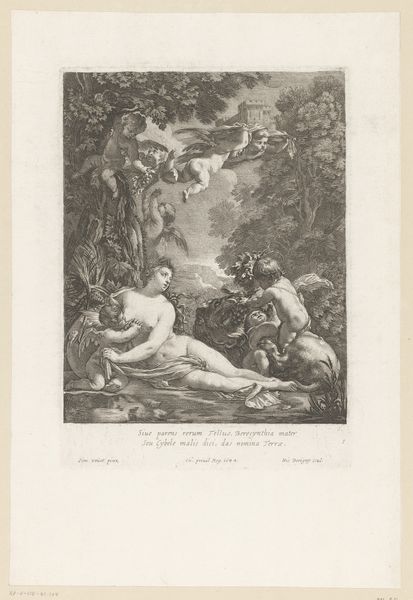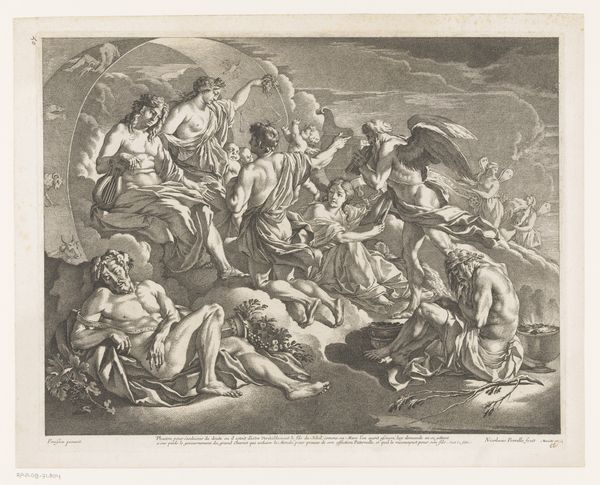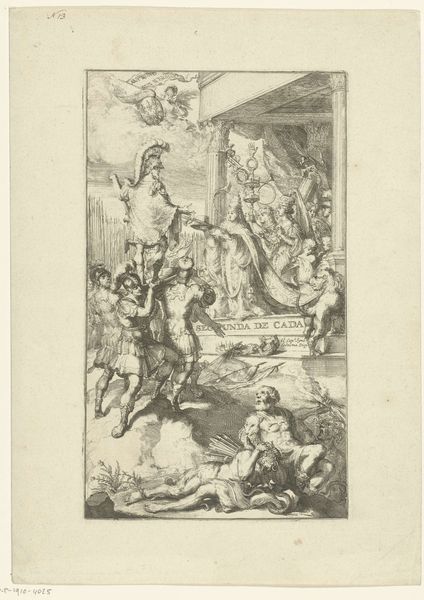
engraving
#
allegory
#
baroque
#
history-painting
#
engraving
Dimensions: height 364 mm, width 239 mm
Copyright: Rijks Museum: Open Domain
Editor: Here we have Michel Dorigny’s 1646 engraving, "Time Overcome by Love, Venus, and Hope". The swirling figures and dramatic lighting give it such a turbulent feel. What do you see in this piece? Curator: Well, at first glance, it's easy to get lost in the Baroque drama, but I think it is key to dig into what the personifications here are actually suggesting. Why does Time – old, male – need to be subdued by these figures of love, beauty, and optimism? Is it simply a celebration of youthful power over the inevitable decay of age? Or does it touch upon a desire to liberate us from established structures, perhaps from historical narratives imposed upon us? Editor: So, it's not just a straightforward good versus evil thing? Curator: Precisely. Think about it: Venus and Hope, traditionally feminine ideals, are actively overpowering Time. Considering the era in which this engraving was created, does that action challenge established hierarchies? Is there a radical idea here of female influence and perhaps even control over not just personal destiny, but the direction of history? Editor: That’s a powerful way of looking at it. I hadn't thought about the gender dynamics at play. Curator: It's critical to read these classical allegories with an understanding of their political implications within their social context. Dorigny's image speaks volumes not only about love conquering all but perhaps a re-envisioning of who gets to write that narrative. Editor: This makes me rethink the role of classical themes in art. Curator: Exactly! By connecting these art historical depictions with contemporary intersectional discourse, we begin to understand whose stories have been told, and who gets to shape the future narratives.
Comments
No comments
Be the first to comment and join the conversation on the ultimate creative platform.
